There is still something to be gained if you parallelize both rbind.fill and rbindlist.
The results are done with data.table version 1.8.8 as version 1.8.9 got bricked when I tried it with the parallelized function. So the results aren't identical between data.table and plyr, but they are identical within data.table or plyr solution. Meaning parallel plyr matches to unparallel plyr, and vice versa.
Here's the benchmark/scripts. The parallel.rbind.fill.DT looks horrible, but that's the fastest one I could pull.
require(plyr)
require(data.table)
require(ggplot2)
require(rbenchmark)
require(parallel)
# data.table::rbindlist solutions
rbind.fill.DT <- function(ll) {
all.names <- lapply(ll, names)
unq.names <- unique(unlist(all.names))
rbindlist(lapply(seq_along(ll), function(x) {
tt <- ll[[x]]
setattr(tt, 'class', c('data.table', 'data.frame'))
data.table:::settruelength(tt, 0L)
invisible(alloc.col(tt))
tt[, c(unq.names[!unq.names %chin% all.names[[x]]]) := NA_character_]
setcolorder(tt, unq.names)
}))
}
parallel.rbind.fill.DT <- function(ll, cluster=NULL){
all.names <- lapply(ll, names)
unq.names <- unique(unlist(all.names))
if(is.null(cluster)){
ll.m <- rbindlist(lapply(seq_along(ll), function(x) {
tt <- ll[[x]]
setattr(tt, 'class', c('data.table', 'data.frame'))
data.table:::settruelength(tt, 0L)
invisible(alloc.col(tt))
tt[, c(unq.names[!unq.names %chin% all.names[[x]]]) := NA_character_]
setcolorder(tt, unq.names)
}))
}else{
cores <- length(cluster)
sequ <- as.integer(seq(1, length(ll), length.out = cores+1))
Call <- paste(paste("list", seq(cores), sep=""), " = ll[", c(1, sequ[2:cores]+1), ":", sequ[2:(cores+1)], "]", sep="", collapse=", ")
ll <- eval(parse(text=paste("list(", Call, ")")))
rbindlist(clusterApply(cluster, ll, function(ll, unq.names){
rbindlist(lapply(seq_along(ll), function(x, ll, unq.names) {
tt <- ll[[x]]
setattr(tt, 'class', c('data.table', 'data.frame'))
data.table:::settruelength(tt, 0L)
invisible(alloc.col(tt))
tt[, c(unq.names[!unq.names %chin% colnames(tt)]) := NA_character_]
setcolorder(tt, unq.names)
}, ll=ll, unq.names=unq.names))
}, unq.names=unq.names))
}
}
# plyr::rbind.fill solutions
rbind.fill.PLYR <- function(ll) {
rbind.fill(ll)
}
parallel.rbind.fill.PLYR <- function(ll, cluster=NULL, magicConst=400){
if(is.null(cluster) | ceiling(length(ll)/magicConst) < length(cluster)){
rbind.fill(ll)
}else{
cores <- length(cluster)
sequ <- as.integer(seq(1, length(ll), length.out = ceiling(length(ll)/magicConst)))
Call <- paste(paste("list", seq(cores), sep=""), " = ll[", c(1, sequ[2:(length(sequ)-1)]+1), ":", sequ[2:length(sequ)], "]", sep="", collapse=", ")
ll <- eval(parse(text=paste("list(", Call, ")")))
rbind.fill(parLapply(cluster, ll, rbind.fill))
}
}
# Function to generate sample data of varying list length
set.seed(45)
sample.fun <- function() {
nam <- sample(LETTERS, sample(5:15))
val <- data.frame(matrix(sample(letters, length(nam)*10,replace=TRUE),nrow=10))
setNames(val, nam)
}
ll <- replicate(10000, sample.fun())
cl <- makeCluster(4, type="SOCK")
clusterEvalQ(cl, library(data.table))
clusterEvalQ(cl, library(plyr))
benchmark(t1 <- rbind.fill.PLYR(ll),
t2 <- rbind.fill.DT(ll),
t3 <- parallel.rbind.fill.PLYR(ll, cluster=cl, 400),
t4 <- parallel.rbind.fill.DT(ll, cluster=cl),
replications=5)
stopCluster(cl)
# Results for rbinding 10000 dataframes
# done with 4 cores, i5 3570k and 16gb memory
# test reps elapsed relative
# rbind.fill.PLYR 5 321.80 16.682
# rbind.fill.DT 5 26.10 1.353
# parallel.rbind.fill.PLYR 5 28.00 1.452
# parallel.rbind.fill.DT 5 19.29 1.000
# checking are results equal
t1 <- as.matrix(t1)
t2 <- as.matrix(t2)
t3 <- as.matrix(t3)
t4 <- as.matrix(t4)
t1 <- t1[order(t1[, 1], t1[, 2]), ]
t2 <- t2[order(t2[, 1], t2[, 2]), ]
t3 <- t3[order(t3[, 1], t3[, 2]), ]
t4 <- t4[order(t4[, 1], t4[, 2]), ]
identical(t2, t4) # TRUE
identical(t1, t3) # TRUE
identical(t1, t2) # FALSE, mismatch between plyr and data.table
As you can see parallesizing rbind.fill made it comparable to data.table, and you could get marginal increase of speed by parallesizing data.table even with this low of a dataframe count.
